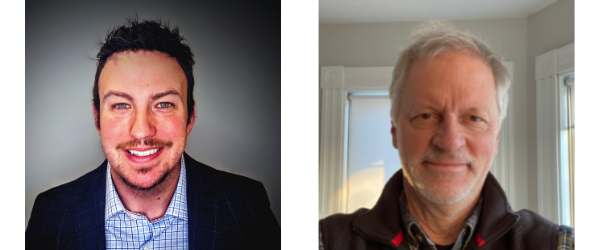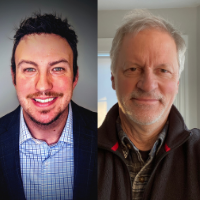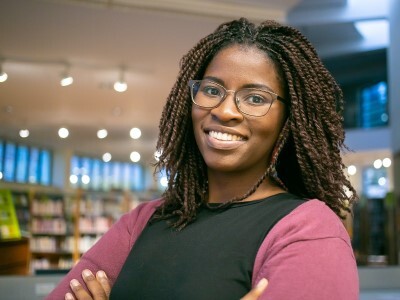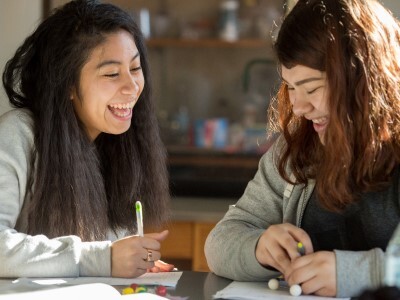Is Next Gen Learning a Place Where the Political Sides Can Meet?
Topics

Next generation learning is all about everyone in the system—from students through teachers to policymakers—taking charge of their own learning, development, and work. That doesn’t happen by forcing change through mandates and compliance. It happens by creating the environment and the equity of opportunity for everyone in the system to do their best possible work.
A Red-State/Blue-State Conversation for Our Times
If education innovation and next gen learning are taking place in both liberal-leaning and politically conservative places, might it bring people across the political spectrum together for the benefit of students?
Our political differences in the United States threaten our future, undercut our capacity to address issues productively, turn neighbor against neighbor, and at times seem to reflect disagreement as fundamental as our perception of facts and reality.
Polls show that today, people in the U.S. see political affiliation as the source of the greatest conflict between groups—much more than race, income, type of community (urban vs. rural) or age. It’s getting harder and harder to identify places where toxic political difference has not (yet) reared its ugly head and turned general consensus into unending argument.
The nation’s public schools are one of those places. With occasional flare-ups going back decades over some aspects of curriculum (e.g., evolution) and pedagogy (perhaps what the “math wars” and “reading wars” are actually about), public education has generally remained a place marked more by consensus than by political warfare.
But schools are changing. In some places, they are changing quite rapidly and are looking profoundly different than the pervasive model that most schoolchildren have experienced (with some adjustments in style, setting, and ambition) over the past nine decades. They are being redesigned to draw more deeply from the science of learning and to suit a different century, a more complex economy, a much more diverse population, and a vastly more interdependent world.
Meet Andy Calkins, co-director of NGLC and proud resident of Massachusetts, the bluest of blue states; and Cory Henwood, the innovation director of Launch High School in Iron County, Utah, a proud red state. Both are fierce advocates for student-centered, personalized, next gen learning. Andy and Cory discovered each other on a Zoom call recently (where all such discoveries are happening these days) and decided to ask each other the question posed in the title to this article.

Co-authors Cory Henwood and Andy Calkins
ANDY: Cory, I’m pretending we’re in a bar at some conference hotel somewhere and, two beers in, have decided to get to the bottom of things. I have to confess to feeling a bit personally tortured over this question. I wrote a blog post more than three years ago called “Is Next Gen Learning a Political Act?” and wasn’t sure whether I’d answer Yes or No until the day before I wrote it. And then it all spilled out in a hurry. (Readers: you’ll have to read it to find out.)
I met you in an open-invitation Zoom discussion focused on Difference Making, the new book from Tom Vander Ark and Emily Liebtag. At a certain point, the conversation turned fairly political, and you felt compelled to jump in and say, “Hold on, everyone. The reforms we’re here to talk about—student-centered, deeper, experiential, project-based learning—aren’t only happening in blue-state, lefty-liberal places. They’re taking root in politically conservative counties like mine, here in Utah.” You were too nice enough to say it, but everyone could sure imagine the thought bubble over your head: “So… just quit being so smug, will ya? You’re just living up to type.”
Is this something that happens a lot? All next gen learning advocates get used to defending their reforms with protectors of the status quo in public education. But do you find that you keep having to do this kind of flag-waving when you’re mixing with reformers from the coasts? If so, is that simply a blue-state smugness problem, or are there in fact contradictions between the vision and goals of next gen learning and the conservative leanings of places like Utah?
CORY: Andy, although given my culturally conservative background common in my state, I sip my soda while you drink your beer at this imaginary conference hotel, I can tell we share a common thirst for the same types of shifts in education. Meeting over Zoom with others who share our passion for the power of difference-making in education, I sensed a bit of despair from many participants. Through their comments, both verbally and in the chat, I could tell they were wondering about the scalability of this effort. Are the development of essential skills that students gain while engaging in next generation learning under the banners of innovative social justice reform, community activism, social-emotional wellness, and collaboration that respects cultural diversity limited to only a select few welcoming coastal areas and large metropolitan centers?
I didn’t regard those who were subtly asking this question as smug or looking down on residents of our more conservative countryside, but instead I perceived them as earnestly seeking these opportunities for students throughout the nation. I saw an opening to share some unifying hope and remove barriers of what may have been limiting their vision for this type of empowering education to a particular political persuasion. In my work as Innovation Director for Iron County School District, whether that is co-designing Launch High School or collaboratively developing our portrait of a graduate and subsequent Iron Essential Eight, I employ human-centered design principles. The more I practice this form of design thinking, the more I realize that those in my conservative community seek the same skills and deeper learning opportunities for our students as you and others do in the more liberal strongholds.
Now a proud conservative or liberal may not use the same words to describe these skill sets, or take the same path to get there, but they ultimately get to the same destination. Under the banners of industrious entrepreneurship, patriotic citizenship, gritty resilience, and teamwork in a global economy, right-leaning parents want their children to have the same skills to be prepared for future success and make an impact on the world that left-leaning communities are looking to develop. I wonder, Andy, what momentum could emerge if we magnified the similarities in these two approaches rather than their differences? Would this help transform education from the stale status quo to educational offerings designed with communities and fit for the purpose of school; to prepare students for a successful future in an unpredictable world?
ANDY: I would sure hope so, Cory. I took a long time to respond to you because, honestly, I wasn’t sure what to say.
Your students in Iron County and especially at Launch High School seem incredibly lucky to me. So do the students at similar schools, similarly unique, in blue-leaning states—e3 Civic High in San Diego, or Intrinsic Schools and CICS West Belden in Chicago, or the Springfield Renaissance School right here in Massachusetts. The future is definitely here AND is unevenly (and unfairly) distributed. Most kids are not experiencing anything like what the students in these schools are experiencing. We need to work together to help every district in the country decide to establish, offer, and learn from their own Launch Academies. That seems like a worthy life’s work. I am happy to commit the rest of my life to doing that with you and with others like you!
But while we do that: I am profoundly worried that this nation is going to wreck these promising advances in school and learning design by politicizing public education.
While the U.S. has become horribly divided politically, public education has generally been able to evade the national political spotlight—which lately seems to turn everything it touches into a toxic swamp of misinformation and knee-jerk tribal advocacy. The furor this year over Critical Race Theory (CRT)— which I guarantee you, not even five percent of the nation’s schoolteachers had ever heard of (much less be proficient in teaching) before it became a hot-button anger-generator of the hard right—makes me want to seed the cloud-cover in those states with chamomile and make the rain just calm people down a bit. Goodness.
Folks on the left (98 percent of them, anyway) are not the radical, flame-throwing socialists that Republican state legislatures, political leaders, and media pundits on the hard right paint them to be. They are simply working (in this context) toward a recognition of the ways that racism has been part of systems, policies, regulations, and mindsets in the U.S. for hundreds of years, continuing through the present. Cory: how is a school founded on open, honest, inquiry-based principles of learning exploration like yours able to square those principles with so much of what the right appears to stand for these days—the “Big Lie,” vote-suppressing “election integrity” measures to take on a non-existent problem of voter fraud, and the imaginary spectre of CRT? Or does your school community self-identify as an outlier in the midst of all of that unhinged political haranguing? I almost hope it doesn’t—and that you’ll help me see how a person or a community could believe in all of these things at once without splitting apart.
CORY: Hey Andy, I too am worried about the political banter that jeopardizes opportunities for students and how each party wants to claim or reclaim public education for its own. Public education priorities should not be political, and when its purposes, pursuits, and progress are designed at the local level, with input from stakeholders, they are better understood and supported. When elements of education seem to be determined outside of the community or at odds with its values, then we see an uprising, and rightly so. Public schools are intended to serve the needs of communities they serve. Now that is an overly simplistic statement of course when you have community viewpoints that are at odds with one another or at odds with the truth. But with today’s technology and online learning methodologies, it is entirely possible to personalize a student’s education and offer them and their families choice and voice in the path their learning takes.
Our school at Launch is a great example of a school that has asked its community, including parents, business leaders, educators, and teens, what are the skills they want us to develop in students to prepare them for a successful future. We have executed on those desires to build transferable human skills with a focus on problem solving, project-based learning, personalization, community partnership, and design thinking. Our focus is not to persuade or push any particular agenda, nor is it our purpose to square our work with the political views of our stakeholders. Schools, and in particular teachers, are asked to do too much to improve the world already and don’t need to be the fix-all for everything that ails society. However, when our students wish, as many of them do, to make an impact on a particular issue or problem in our community, we support them and help them develop transferable skill sets in the process, such as critical thinking, communication, creativity, and collaboration competency.
This past year in our inaugural year at Launch, this included some of our students working with our local Indigenous tribes on land rights and sharing campaigns to reduce environmental impacts, while other students proposed fewer COVID mask restrictions and less government restriction on BLM grazing land use. (The Bureau of Land Management, not the BLM you might have been thinking.) Students take on issues all over the political spectrum and many that are entirely apolitical. The key here is providing choice for parents and support for students' passions toward making an impact regardless of their political views. Again, if we can put the polarizing politics aside, we can find a vast common ground in education. I have no desire to fight the political ghosts of the right or left as it detracts from a much more unifying pursuit: developing the human skills students need to be successful and make a difference in the world around them.
ANDY: So well said, Cory. Thank you—and thank you for this good conversation. “If we can put the polarizing politics aside, we can find a vast common ground in education.” Yes. We all want the same thing: for children and young adults to grow up to find purpose, fulfillment, safety, community, and love in their lives. Like our nation, as Amanda Gorman said so memorably in her Inauguration Day poem, public education in the U.S. is unfinished. We’d all do well to keep that vast common ground fully in mind as we work to keep improving it, together.
Image at top by Elle Ritter.




